The symbolism of the rose is not tethered to one universal meaning, but rather, a range of interpretations influenced by cultural, historical, and personal variables. From channeling intense emotions to expressing religious reverence, the rose’s symbolism navigates many spectrums of life’s experiences.
To sum it up, a rose often symbolizes love, beauty, mystery, passion, and even spiritual awakening. Its usage in various contexts reveals even more meanings, such as purity, innocence, renewal, femininity, and balance. It can also signify healing and protection. In divination practices like tarot, roses are popular for their rich symbolic language.
Keep in mind, though, that the color of a rose can greatly influence its symbolism. Red roses are typically seen as emblems of passion and love, while white roses symbolize purity and peace. More on this later!
In the sections to come, we’ll delve into the deeper layers of rose symbolism, exploring its roots in history, spiritual significance, mythological associations, and more.
Origins and History of the Rose
The rose, a symbol of love and beauty, holds a long and vibrant history tracing back millions of years. From ancient civilizations to the present day, it has fascinated and captivated humanity with its enchanting allure and symbolic significance.
Rosa, the genus name for roses, includes over 300 species and thousands of cultivars. These fragrant blooms originated on Earth some 35 million years ago, their fossils discovered in both North America and Europe.
Ancient Orient and Greece
The history of cultivated roses began in Asia around 5,000 years ago. They were cherished in the ancient civilizations of Mesopotamia and China for their medical properties and breathtaking beauty. In Greece, roses were associated with the goddess Aphrodite, symbolizing love and desire. Hence, they were often used in rituals and ceremonies.
Romans and the Middle Ages
When Rome was at its zenith, roses were used in abundance. They were used to carpet floors and fountains during lavish feasts and celebrations, a symbol of status and wealth. During the Middle Ages, roses transformed into a spiritual symbol, often featured in Christian artwork and architecture to represent the Virgin Mary – the rose without thorns.
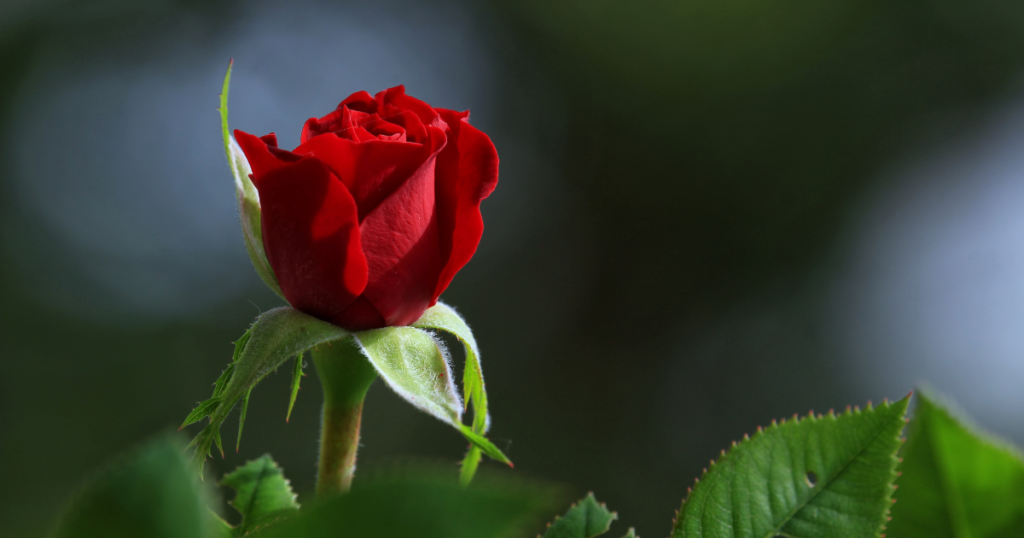
Victorian Era
Moving to the Victorian era, roses became the language of love. Different colors and varieties of roses were given specific meanings. This allowed individuals to express feelings and sentiments that the conservative norms of the time did not permit them to articulate explicitly.
In the botanical world, the modern rose, known as Rosa chinensis, made its way to Europe in the late 18th century. This was the turning point when roses started to resemble the ones we know and recognize today.
From their wild ancestors, roses have evolved into countless cultivars and hybrids, gracing gardens, inspiring poets, and decorating homes all over the world. They continue to charm us with their unparalleled beauty, diverse colors, and rich symbolism.
The Symbolism of the Rose Throughout the Ages
The rose, with its captivating beauty and enchanting fragrance, has been a potent symbol throughout the ages. Its varied symbolism across different cultures and times is a testimony to its lasting allure.
The Ancient Times
In ancient Egyptian civilization, the rose was associated with Isis, the goddess of motherhood and fertility. Egyptians viewed it as a symbol of eternal life and included it in funerary rituals.
In Greek mythology, roses were linked with Aphrodite, the goddess of love. It’s stated that the first rose sprang from her tears, positioning it as a symbol of love and beauty. In Rome, the rose was a symbol of wealth, power, and privilege, predominantly used by the elite.
The Middle Ages
During the Middle Ages, the rose became a religious symbol representing the Virgin Mary. The five-petal rose was used in architecture and design as a sign of her presence and love. This era cast the rose as an emblem of purity and divine love.
Renaissance and Beyond
In the Renaissance period, the rose was often found in paintings, signifying earthly love and pleasure. Later on, during the Victorian era, the language of flowers was in full bloom, and the rose stood as a discrete means of expressing feelings, especially love and admiration. This symbolism still persists prominently in today’s times.
Thus, the rose has journeyed across eras, imbibing layers of meanings and symbolism as it passed through different cultural landscapes.
The Spiritual Significance of the Rose
Embarking on a journey exploring the spiritual significance of the rose, we find it to be a symbol of divine love, enlightenment, and spiritual awakening. The rose, with its beautiful blossoms and thorny stems, can be seen as a metaphor for the spiritual path: beautiful and alluring, it also requires resilience for the path is often lined with challenges.

The rose’s journey from bud to full bloom resembles the spiritual path of a person—beginning with a seed of potential and maturing into a beautiful bloom touched by the divine. This journey is not always easy, with challenges and obstacles represented by the rose’s thorny stem. Yet, with patience, faith, and perseverance, the rose reaches its full blossom, symbolizing the beauty and wisdom attained through spiritual growth.
“Every flower is a soul blossoming in nature.” – Gerard De Nerval
In esoteric spiritual traditions, the multi-petaled rose is often used to symbolize the many layers of reality, or the many stages of spiritual development. As you delve deeper into the layers of the rose, just as on the spiritual path, you reveal more of its true essence.
Roses, particularly the red rose, are also associated with the heart chakra in several spiritual practices, including Kundalini Yoga and Reiki. The heart chakra is the center of love, compassion, and empathy. Cultivating these qualities often involves a spiritual journey that is mirrored by the life cycle of a rose.
On another level, roses have been used in spiritual ceremonies and rituals for centuries. From the pagan rituals of the Druids to the Christian Rosary, the rose is seen as a conduit for divine energy and a tool for spiritual transformation.
- The Druids: This ancient Celtic tradition revered the rose as a sacred symbol and used it in their mystical practices for its vibrations of divine love and beauty.
- The Rosary: In the Catholic tradition, the Rosary, a form of prayer using beads, was often called “the rose of prayer”. Each bead was like a rose petal, symbolizing a prayer offered to the divine.
Thus, the spiritual significance of the rose spans different traditions, cultures, and eras, always signifying a divine connection and the journey of the soul towards enlightenment.
The Mythological Associations of the Rose
The rose, resplendent and poetic, holds a distinguished place in various mythologies worldwide. Consequently, its association with divine figures, and specific mythological episodes has endowed it with pronounced symbolic value.
Greek Mythology
In Greek mythology, the rose was closely associated with the goddess of love and beauty, Aphrodite. According to one popular myth, when Aphrodite was born from the sea foam, roses sprouted from the droplets of water that fell from her body. Another account tells us that roses were initially white, and it was the blood of Aphrodite, who was pricked by a thorn while rushing to aid her lover Adonis, that turned them red.
Roman Mythology
Similar associations can be found in Roman mythology, where Venus, the counterpart of Aphrodite, also was tied closely to roses. It was believed that roses would spring from the ground wherever she walked.
Middle Eastern Mythology
In Islamic tradition, roses, particularly the red rose, hold significant spiritual meaning due to their association with the prophet Mohammed. According to legend, a rose bush sprang from his sweat as it fell to the ground, thus linking roses to divinity.
Christian Mythology
The rose also played a crucial part in Christian symbolism, particularly reflecting elements of sacrifice and heavenly perfection. It is commonly linked to the Virgin Mary, often referred to as the “mystic rose” in Catholic tradition. Mary is seen as the rose without thorns, signifying her immaculate conception and purity.
These mythological associations not only underline the rose’s cultural significance across different civilizations, but also its enduring legacy as a symbol of beauty, divinity, and love.
The Rose as a Symbol of Love and Romance
When you think of expressing love and romance, what better emblem springs to your mind than the enduring rose? For centuries, this timeless floral symbol has been an essential ingredient in love potions, a frequenter of love letters, and a messenger of passion and romance. But, have you ever pondered why the rose is held in such high esteem when it comes to matters of the heart? Let’s take a heartful dive into the romantic symbolisms of the rose.
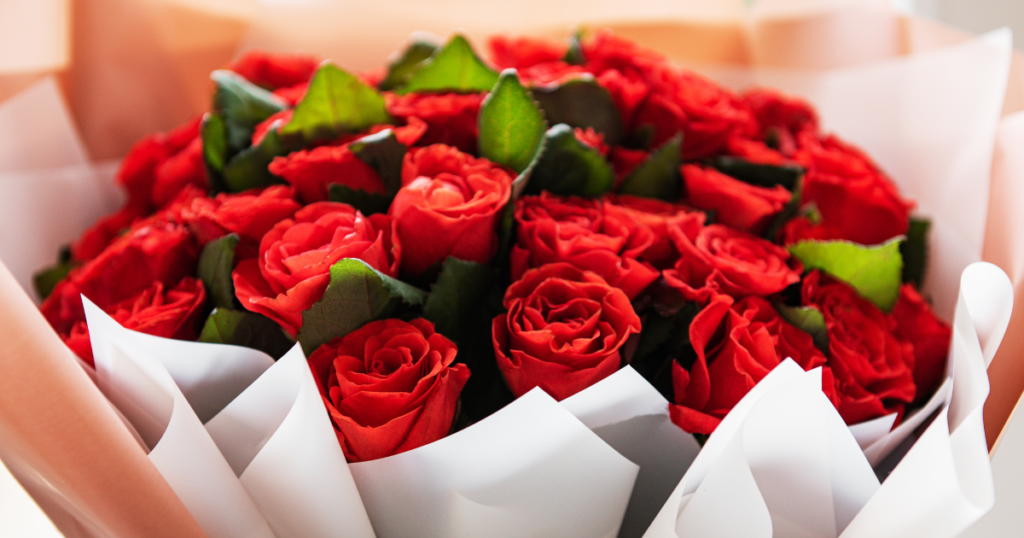
Rose’s association with love and romance is deeply embedded in human culture and history. The ancient Greeks associated roses with Aphrodite, the Goddess of Love. In Christian tradition, the red rose came to be seen as a symbol of the blood of Christ, embodying divine love. This historical affinity was further cemented in the Victorian era when expressing emotions verbally was considered inappropriate. Instead, Victorians turned to the ‘language of flowers’, embracing the rose as the unmistakable signal of deep affection and love.
In addition to its long and deep cultural associations, the rose’s symbolism is unwrapped in its very form. Look carefully, and you’ll see the petals of a rose encircle its center, creating a visual impression of a heart. It’s no wonder these delicate blooms touch hearts like no other flower can!
But what about the presence of thorns amongst the soft, charming petals? Doesn’t it contrast the smooth flow of love and romance we often desire in our relationships? But think about it. The thorns represent the hardships and challenges that come with love, bringing a new dimension of realism to the romantic symbolism. They remind us that love isn’t just about the sweet moments but is also packed with hardships that require patience and nurturing to overcome.
Let’s not forget the intoxicating fragrance of a rose. Its scent is almost universally associated with romantic love, further intensifying the connection between the rose and amorous feelings. This potent fragrance has inspired countless perfumes and scents designed to evoke passion and romance.
In summary, as the symbol of love and romance, the rose beautifully embodies the joy, passion, beauty, sweetness, and depth of these feelings, while also signaling the challenges that invariably accompany them. Now, the next time you gift or receive a rose, you’ll appreciate its rich symbolism and share a piece of history cultivated by centuries of humans professing their love.
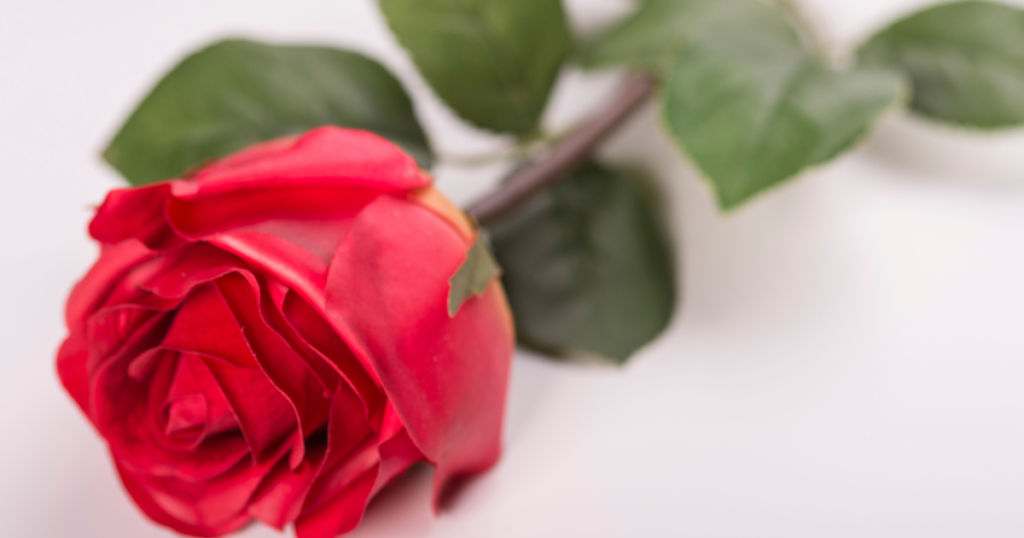
The Rose in Religious and Spiritual Traditions
spiritual traditions around the world, representing divine love, wisdom, and transcendence. Its qualities of beauty, fragrance, and thorns—the enchanting allure and underlying caution—resonate with profound spiritual truths and teachings.
Christianity
In Christianity, the rose has powerful symbolic implications. It is often associated with the Virgin Mary, who is frequently referred to as the ‘Mystic Rose’. Her purity, humility, and divinity align with the attributes of a white rose, making it a common symbol in Christian art. The five-petal rose also symbolizes the five wounds of Christ. Furthermore, roses are seen in Christian iconography portraying the blood of martyrs who died for their faith.
Buddhism
In Buddhism, the rose, similar to the lotus, symbolizes an awakened mind, untainted by the mud of ignorance, and blooming with the beauty of enlightenment. It is considered a representation of the Buddha nature inherent in every being. The exquisite bloom of the rose encapsulates the potential for great beauty and wisdom even in the midst of thorny challenges.
Sufism
The mystical branch of Islam, Sufism, uses the rose as a symbol of the soul and the spiritual journey towards divine love. The rose’s journey from bud to bloom mirrors the soul’s journey towards enlightenment. Even the thorns have a role, representing life’s difficulties on the path of spiritual development.
Hinduism
Roses in Hinduism, especially red ones, are seen as an embodiment of love, passion, and devotion. They are widely used in ritualistic worship and religious ceremonies to honor the deities, especially the Goddess Lakshmi, who is associated with wealth, prosperity, and beauty.
Across cultures and continents, the rose remains a profound symbol in religious and spiritual traditions. It offers timeless wisdom on love, sacrifice, transcendence, and the inherent potential for beauty and growth, even amidst life’s thorny adversities.
The Different Colors of Roses and Their Meanings
Amongst the myriad of flower varieties, the rose stands out for its rich palette of colors, each symbolizing a unique sentiment. The versatility of the rose allows it to communicate a range of emotions, from passionate love to heartfelt condolences, depending on its hue.

Red Roses
Often the star of romantic tales, red roses are synonymous with deep love and affection. However, they can also express respect, admiration, and devotions of all sorts.
Pink Roses
Pink roses are a symbol of grace, gentle emotions, joy, and gratitude. Offering a bouquet of these blush-colored blooms is a tender way to express admiration or say thank you.
White Roses
Representing innocence, purity, and spiritual love, white roses are often seen at weddings or religious events. They signify a new beginning, making them a symbol of hope.
Yellow Roses
Once a symbol of jealousy, yellow roses today stand for friendship, joy, and caring. They radiate warmth and are often used to convey congratulations or well wishes.
Orange Roses
A vibrant blend of red and yellow, orange roses signify passion, enthusiasm, and attraction. Send these fiery blooms to someone you’re smitten with to express your intense desire!
Purple Roses
Fascinating and out of the ordinary, purple roses symbolize enchantment or love at first sight. Additionally, they also represent opulence, royalty, and grandeur.
Blue Roses
Due to their non-existence in nature, blue roses symbolize the unattainable and mysterious. They can also represent new opportunities and possibilities.
Black Roses
A color commonly associated with mourning, black roses symbolize death, farewell, and rebirth. They can also symbolize a dramatic ending and new beginnings.
So, the next time you consider gifting roses, remember: color speaks volumes. Choose the hue that resonates best with your sentiments and convey your emotions with the silent yet powerful language of roses.
The Meaning of Roses in Different Cultures
In many cultures around the world, the rose has been venerated and adored for its exquisite beauty and rich symbolism. This perennial flower carries diverse meanings, depending on the culture and context. Let’s delve into some of these cultural interpretations of the magnificent rose.
Eastern Cultures
In Chinese culture, the rose symbolizes love and serves as an emblem of balance. It’s often associated with the Yin, a feminine energy that represents passivity and gentleness.
Interestingly, the word for rose in the Chinese language ‘méigui’ translates to ‘beautiful maiden’ highlighting the association between roses and femininity.
In Japanese Culture, roses signify respect, beauty, and courage. In Japanese art, this flower often appears in tattoos, fine arts, and traditional tea ceremonies.
Western Cultures
In British culture, roses feature prominently due to their connection to England’s history and heraldry. The War of the Roses, a series of 15th-century civil wars, was so named because the symbol of a white rose represented the House of York, while a red rose signified the House of Lancaster.
In American culture, roses hold a place of honor as the national flower. They symbolize love, honor, faith, and beauty. Furthermore, each color of the rose carries a unique sentiment ranging from passionate love to friendship.
Across the cultures of Europe, ranging from Greek to Roman and beyond, roses have traditionally been associated with love and beauty. The association with love dates back to ancient Greek and Roman times and the love goddesses Aphrodite and Venus.
Middle Eastern Cultures
In Iranian culture, roses, especially the red ones, engender a deep spiritual significance. They symbolize the human heart, the spiritual development of the soul, and the cycle of life and death.
The interpretation and symbolism of roses across various cultures serve as a testament to the universal admiration of this beautiful flower. Whether being used to express love, represent beauty, or symbolize spirituality, roses touch the hearts and souls of individuals around the globe.
The Rose as a Symbol of Beauty and Elegance
When you think of strength woven with delicacy, it is a vision of the rose that often comes to the fore. Since time immemorial, the rose has been a key symbol of both beauty and elegance. Its intricate design, its delicate petals laid out in an almost hypnotising spiral, and its striking colors all contribute to its symbolic stature.
The rose incarnates a spectrum of aesthetics that appeal to our senses, often serving to capture the essence of sheer beauty in its rare form. But beyond this scrutiny of the eye and senses, the rose’s elegance lies in its inherent characteristics. Renowned for its resilience and thriving nature, its allure isn’t just its physical aspects; it is phenotypical of innate elegance and grace.
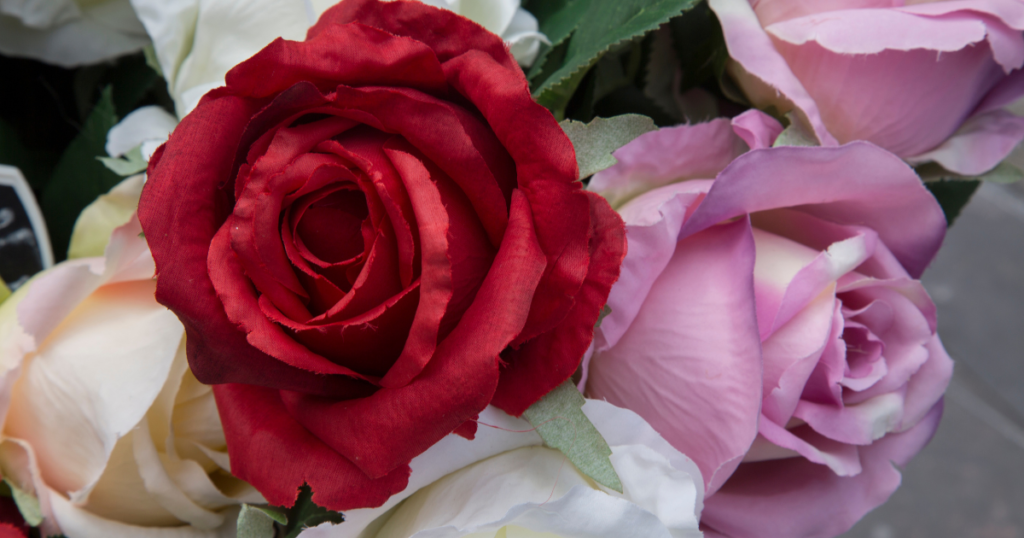
Consider the grace with which a rose blooms and how each stage of its life cycle unfolds seamlessly. It starts as a tight bud, a point of potentiality that gradually unfurls its petals, revealing the beauty within. This process mirrors little moments of revelation and growth, a testament to the elegant progression of life itself.
Beyond floral beauty, the fragrance of a rose is yet another marvel of nature that draws many towards it. There’s an undeniable charm in the heady yet delicate scent of a rose that invigorates and soothes, embodying the paradox of being both invigorating and relaxing.
In many cultures, the rose is viewed as a bearer of harmony and balance, where its beauty is seen as a means to inspire and uplift. Typically featured in art forms, poetry and even architectural designs, the rose is a symbol used to denote an understanding of beauty and excellence beyond the superficial.
In summary, the rose’s beauty isn’t skin-deep; it is much more profound. It symbolizes an awareness of inner grace, resilience against odds and the capacity to evolve elegantly, thereby reinforcing the rose as a symbol of beauty and elegance.
The Rose as a Symbol of Passion and Desire
hear of roses invoking sentiments of passion and desire. This interpretation of the rose isn’t baseless – it finds its roots deep in historical tales and traditional symbolism. The passionate red hue and the enchanting fragrance of the rose make it a fitting symbol for these intense emotions.
From the days of ancient Egypt, where Cleopatra famously used rose petals to seduce Mark Antony, roses have been synonymous with love and desire. Many cultures have carried on these associations, casting the rose as the ultimate symbol of raw passion and sensual desire.
The Deep-Rooted Symbolism of Red Roses
A red rose is typically considered the embodiment of romantic love, but its symbolism extends beyond just love. The intense color and heady aroma are often contrasted to the thorns on the rose’s stem, symbolizing the often dangerous and painful nature of deep passion and desire. Whether in romantic relationships, creative pursuits, or personal dreams, passion involves taking risks and perhaps even enduring pain, similar to how one might get pricked by thorns while picking roses. Yet, as any rose enthusiast can attest, the beauty of the flower remains worth the potential for pain.
The Rose in Folk Tales
Many traditional folk stories also use the rose as a symbol of burning desire, often weaving stories about passionate lovers willing to overcome great challenges and make significant sacrifices for their love. One such story is that of Tristan and Isolde, where the rose becomes a symbol of their intense and forbidden love, showing how passion can override societal norms and expectations.
In essence, the rose is a multifaceted flower, and its symbolism as an emblem of passion and desire is well-founded. It serves as a striking reminder that both emotions are just as vibrant, enticing, and captivating as the flower itself, while also warning us that they come with risks. However, much like the rose, the beauty and exhilaration they offer usually outweigh their dangers.
The Rose as a Symbol of Purity and Innocence
around the world, the rose flower holds a particularly beautiful symbolism as a representation of purity and innocence. Throughout history, this timeless flower has been associated with virtues of purity, innocence, and spiritual love, with white roses often taking center stage in this narrative.
The impeccability of the rose, with its unblemished petals and vibrant freshness, echo symbols of untainted beauty. Just like the delicate bloom of a pure white rose, innocence is something untouched and preserved, precious due to its unsullied nature. Hence, the rose came to embody such ideals in various forms of cultural representation.
White Roses
Arising specifically, the white rose has long been a symbol of innocence and purity. The pristine, light-imbued petals convey a message of grace, humility, and reverence, often used in events like christenings and weddings to represent these virtues. It carries a spiritual connotation, hinting at an unworldly purity that transcends physical allure.
Roses in Christian Symbolism
In Christian symbolism, the white rose also holds major significance. It is often linked with the Virgin Mary – the “Rose without Thorns”, reinforcing the association with purity and innocence. The immaculate conception, symbolizing Mary’s purity, is frequently depicted with white roses.
Furthermore, the connection is strengthened with angels, often illustrated either holding a white rose or surrounded by them, underscoring their own association with purity and innocence.
Roses in Weddings
In contemporary times, roses, especially the white ones, continue to be an important part of wedding ceremonies. The innocent connotation of white roses makes them an ideal adornment for bridal bouquets, table centerpieces, or as general decoration – reinforcing the symbolic purity of the bride on her wedding day.
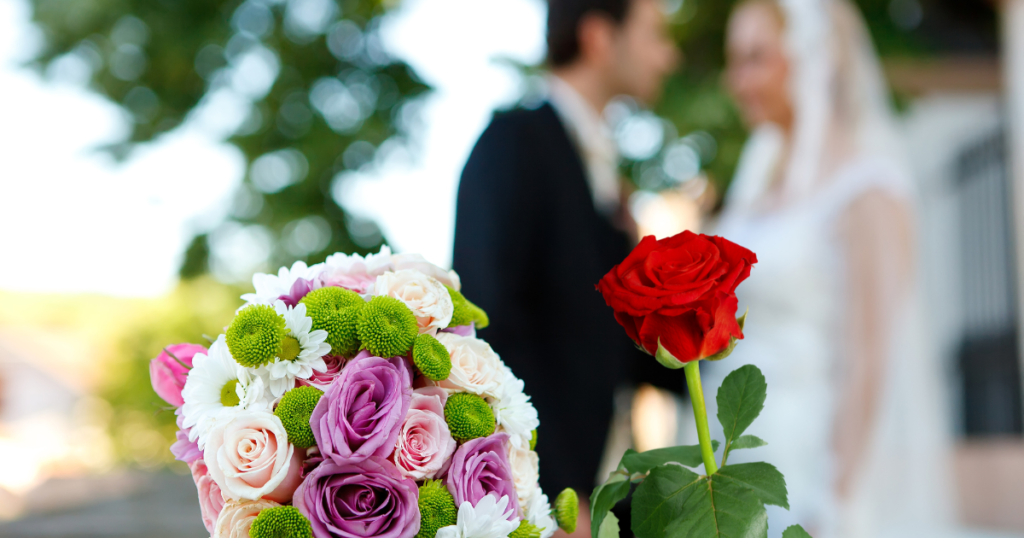
In conclusion, beyond being merely a beautiful blossom, the rose is imbued with poignant messages of purity and innocence, making it an enduring symbol of these cherished virtues in various aspects of human culture and tradition.
The Rose as a Symbol of Renewal and Rebirth
, the rose exudes symbolism that encompasses more than just love and beauty. It is intimately tied with the themes of renewal and rebirth. Nature itself attests to this, as each year the rose bush recoils into itself during winter, only to bloom again in the springtime, full of vibrant life. This cyclical pattern serves as a dynamic representation of renewal and rebirth, a metaphoric testament to overcoming obstacles and experiencing a rebirth of sorts.
The rose also symbolizes renewal due to its connection with the dawn. According to various myths and legends, roses would bloom with the sunrise and close their petals as the sun set, symbolizing the daily renewal of life. This daily rebirth seen in the rose made it a powerful emblem of a fresh start or a new beginning.
In Christian traditions, the red rose is a symbol of Jesus Christ’s resurrection. In this context, the rose is seen as a symbol of rebirth and eternal life. The rose’s ability to return each year after the long, hard winter is a compelling metaphor for resurrection and the renewal of life.
Furthermore, in alchemical symbolism, the rose is often depicted in the center of a cross, a potent symbol of transformation and rebirth. Alchemists believed in the potential for base substances to be transmuted into noble ones, often pairing this process with the symbolism of a rose blossoming despite the harsh conditions it encounters. Gold, symbolizing spiritual achievement and personal transformation, was referred to as the ‘rose of the metals,’ emphasizing even further the association of roses with renewal and rebirth.
As such, the symbolism of the rose as a representation of renewal and rebirth stands strong, backed by centuries of cultural, religious, and spiritual practices. A reminder that we possess the ability to renew ourselves, to bloom again after periods of hardship, just like the enduring rose.
The Rose in Literature and Art
Throughout the centuries, the rose has been widely depicted in literature and art, bearing testament to its profound influence over human thought and imagination. It conveys a myriad of emotions and nuances, spanning love, beauty, transience, and more, thus conferring an infinite palette of sentiments for authors and artists to draw upon.
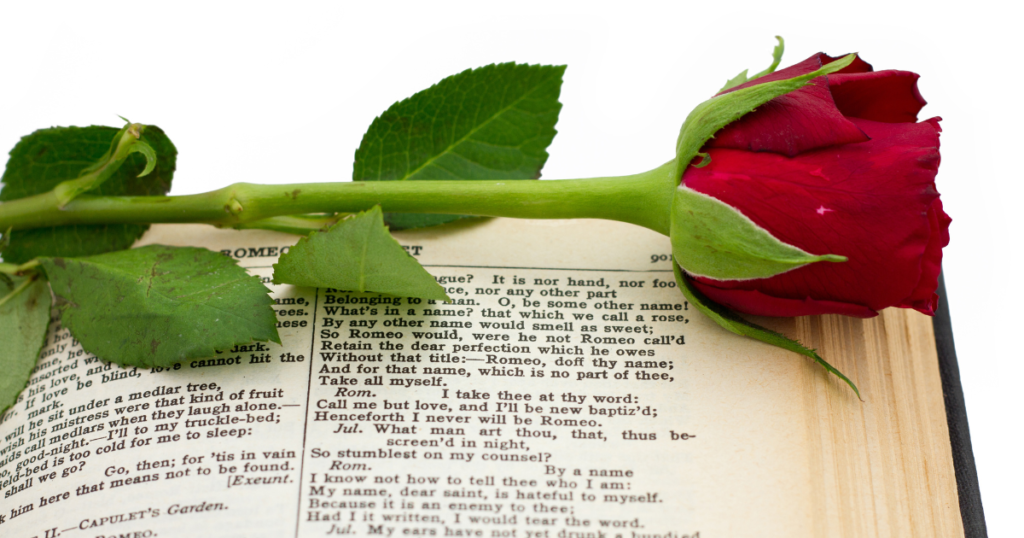
Representation in Literature
From Shakespeare’s “A rose by any other name would smell as sweet” in Romeo and Juliet, to Emily Brontë’s “I am the only being whose doom. No tongue would ask, no eye would mourn. I’ve passed my evening in the [rose’s] shade” in Wuthering Heights, the rose is often intertwined with the narratives of literary work. Whether as a metaphor for beauty, a symbol of vehement passion or a harbinger of profound loss, the rose’s ubiquity in literature is indicative of its enduring resonance with writers and readers alike.
Depiction in Art
In the realm of art, roses, with their concentric layers of petals, are evocative of mystery and depth, and are thus a cherished subject for artists. History is awash with renowned artworks featuring this stunning bloom. Be it Van Gogh’s ‘Still Life: Vase With Pink Roses’, Botticelli’s ‘The Birth of Venus’ featuring roses scattered by Zephyrs, or Dali’s ‘The Meditative Rose’, each painting encapsulates a distinct interpretation of the rose, underpinning its timelessness in artistic expression.
Roses in Poetry
Roses frequently grace the stanzas of poems, imparting a sense of fragility, beauty, love and transience. Robert Burns’s “A Red, Red Rose,” is emblematic of the rose’s romantic symbolism in poetry. Alternatively, T.S. Eliot’s mention of the rose in “Four Quartets” reinforces its spiritual significance: “The roses had the look of flowers that are looked at.”
The Rose in Music
Not to be overlooked, the role of the rose in music and song is also substantial. Its symbolism has pervaded lyrics across cultures and genres, forming a common thread of shared human experience. From the dulcet tones of Édith Piaf’s ‘La Vie en Rose’ to the poignant narrative of Bette Midler’s ‘The Rose,’ the figure of the rose inspires an exploration of themes as diverse as love’s triumph, life’s fleeting nature, and the struggle within the human condition.
In essence, the rose has been and continues to be a multifaceted symbol, bridging the realms of literature, art, poetry, and music with its extensive reach. Its universal symbolism, simultaneously evoking beauty, passion, and a sense of the ephemeral, resonates at the very core of the human experience, thus firmly entrenching the fascinating flower in our cultural consciousness.
The Rose as a Symbol of Femininity and Empowerment
Over centuries, the rose has emerged as a potent symbol of femininity and empowerment. This proud flower, in all its myriad forms and hues, has been closely associated with the divine feminine, power, and resilience in a variety of cultures and contexts.
Understanding the intricate relationship between the rose and femininity requires acknowledging the flower’s inherent grace and beauty. Just as rose petals unfold to reveal a delicate inner structure, so does the concept of femininity involve the recognition of strength in vulnerability and gentleness.
The rose, with its thorns, is a reminder of the dualities found within the feminine — beauty and fierceness, gentleness and resilience, vulnerability and strength. This juxtaposition makes the rose an enduring symbol of empowered femininity.
Historical Roots
In ancient civilizations, rulers and goddesses were often associated with roses. Aphrodite, the Greek goddess of love and beauty, was linked to roses, as was Isis, the Egyptian goddess of fertility and motherhood. These connections highlight the long-standing relationships between roses, femininity, and power in historical contexts.
Roses in Social Movements
In more contemporary symbolism, roses have played an essential role in various social movements advocating for women’s rights. The “Bread and Roses” strike in 1912, fought by women garment workers for fair wages and dignified conditions, elucidated the rose as a symbol of passionate demand for not just survival, but also dignity and respect.
Moreover, roses have been used in protests, marches and demonstrations to symbolize unity, strength and demands for equality. The rose gives voice to the collective struggle for rights and recognition, associating it with feminine courage and resolve.
Roses in Literature and Art
In literature and art, roses often symbolize the feminine mystique and complexity. Poets, authors, and artists use the rose to represent not only physical beauty but also emotional depth and resilience inherent in the feminine. This helps to resist stereotypical representations and explores the multiplicity and strength of femininity.
The undeniably appealing aesthetics of the rose, combined with its rich cultural symbolism, make it a powerful symbol of femininity and empowerment. As a testament to strength, resilience, and beauty, the rose continues to inspire and empower, blooming as a beacon of hope and change.
The Rose as a Healing and Protective Flower
When considering the vast array of symbolism attached to the rose, one should not overlook its intriguing contributions in the realms of healing and protection. Throughout history and across multiple cultures, roses have been considered sacred, harbouring medicinal properties and magical defenses that have resulted in their usage for both physical and spiritual wellbeing.
The Healing Properties of Roses
Roses, in their variety of forms, have been employed as therapeutic agents for centuries. Not only aesthetic, these resplendent blooms contain properties known to promote physical health and emotional tranquility. Their petals, when distilled or infused, yield potent oils and waters routinely used in aromatherapy, skincare and tea preparations.
You may have marveled at the delightful aroma of rose essential oil, but did you know that its exquisite scent is only the beginning of its wonders? Known for its antibacterial, antifungal and antiviral properties, rose oil has been touted as an effective treatment for a range of skin conditions, including acne, rosacea, and scars. Moreover, its calming aroma is a balm for the nerves, believed to alleviate anxiety and stress.
Rose water, made from rose petals steeped in water or steam-distilled, is another jewel in the crown of rose remedies. It is noted for its soothing and hydrating effects on the skin, as well as its ability to reduce redness and inflammation.
Even rose tea, made from dried rose petals or rosehips, is esteemed in herbal medicine for its rich vitamin C content and its ability to aid in digestion and boost the immune system.
Roses for Spiritual Protection
However, the rose’s healing potency does not cease with its physical applications. Historically, roses have also been considered guardians against negative energy, frequently incorporated in spiritual rituals and practices to provide protection and peace.
In many traditions, the potent fragrance of the rose is believed to ward off evil spirits and dispel negativity. This belief has influenced the usage of rose incense and rose water in space-clearing rituals and in providing a calming and sacred ambiance during prayer and meditation.
The rose, with its protective thorns, is also a powerful symbol of personal boundaries and spiritual defense. It is a gentle reminder that while openness and vulnerability are beautiful, it is equally essential to guard our own well-being, pointing to an essential truth often overlooked in our journey towards healing.
So, it appears that beyond being a symbol of love and beauty, the rose indeed is a formidable ally in our quest for health, balance, and well-being. Whether you’re seeking comfort for your skin, a boost for your immune system, or a shield against negativity, it might just be time to turn to the resplendent rose, nature’s gift of healing and protection.
The Rose in Tarot and Divination
In the mystical world of Tarot, the rose carries profound significance. It frequently graces the cards with its presence, symbolizing balance, hopeful promises, new beginnings, and the entwining of the human experience with spiritual transcendence. Each time a rose appears, it’s worth noticing the color, as red and white roses carry separate symbolic meanings, parallel to their common associations.
The Rose in Tarot Cards
One distinct use of roses in Tarot is in the Major Arcana, featuring prominently in “The Fool”, “Magician”, “Strength”, and the “Death” cards. The Fool, with a white rose in his hand, embarks on a journey of innocence, purity and enlightenment. The Magician card features a lush bed of roses, indicating the beauty and allure of the tangible world. In the Strength card, a serene woman holds a fully blossomed rose, symbolizing the power of love and compassion over brute force. In contrast, the Death card displays a white rose, a representation of purity, promise, and new beginnings, inspite of drastic transformations.
Besides the Major Arcana, roses also bloom in the suit of Cups, signifying emotions, intuition, and relationships, drawing a connection to the flower’s ancestral association with the human heart and feelings.
Rose Symbolism in Divination
Roses play an equally significant role in various forms of divination beyond Tarot. In some traditions, the petals of the rose are used in pendulum divination to receive answers from the spiritual realm. Similarly, rose water, believed to hold the flower’s spiritual energy, is used in divinatory rituals to induce visions and dreams.
Another form of divination involves observing rose buds in a garden. It is believed that if the first rose to bloom is red, it foretells of love, while a white rose predicts peace and tranquility. If a rose bush produces more flowers than expected, it could suggest an upcoming joyous event.
Roses, with their delicate fragrance and timeless beauty, have consistently been symbols of the divine. Their use in tarot and divination testament to their spiritual and emotional resonance, providing intuitive insights wrapped in their splendid petals. Beyond being just a beautiful flower, the rose thus becomes a mystical tool for prophecy, guiding us towards understanding the complex dance of life.
The Rose as a Symbol of Balance and Harmony
When you look at the rose, it’s as if you’re looking at a perfect representation of balance and harmony. The blossom is an exquisite symphony of petals, each one meticulously arranged around the other in a pattern that’s both soothing and visually striking. This inherent balance that the rose displays is why it has come to symbolize harmony and equilibrium in various cultures and spiritual practices.
Beyond its physical appeal, the rose, in its various colours and forms, exhibits a harmonious balance of different meanings. From love and beauty to purity and innocence, the rose effortlessly embodies a spectrum of emotions and states of being, all in perfect harmony.
In the realm of spirituality, roses have a special place as symbols of divine balance. For instance, in ancient Chinese philosophy, the rose is believed to balance the yin (passive, feminine force) and the yang (active, masculine force). Therefore, they are often used in Feng Shui practices to promote balance and harmony within a space.
Furthermore, as a flower that blooms amidst thorns, the rose effectively symbolizes the balance of good and evil, pleasure and pain. It teaches us that beauty and harmony can still thrive, despite hardships and challenges. The rose continues to bloom, radiating beauty and fragrance, despite the thorny obstacles it encounters, exemplifying a harmonious balance between resilience and grace.
Also, in numerology, roses, particularly those with five petals, are associated with balance. The number five is an important symbol for balance, as it’s the midpoint between numbers one and nine. The five-petaled rose harmoniously represents the balance between the human world (represented by the number four) and the divine (symbolized by the number one).
Roses are also recognized in aromatherapy for their unique ability to balance the senses. The scent of rose is known to provide emotional balance, reducing anxiety and stress and promoting peace and tranquility. Using rose essential oils or rose-infused products can be a part of practicing self-care and maintaining an inner sense of balance.
The rose’s enduring ability to symbolize balance and harmony lies in its unique blend of attributes – aesthetic beauty, layered symbolism, cultural significance, spiritual relevance, and universal appeal. This timeless flower continues to inspire, uplift, and balance emotions, making it much more than just a simple adornment in a garden.
The Rose as a Bridal Flower and Wedding Tradition
Along with its captivating beauty, the rose also carries a deep significance when it comes to weddings and bridal ceremonies. The rose, with its enchanting fragrance and eye-catching colors, is often chosen as the star of many bridal bouquets. But the rose’s allure in weddings goes far beyond aesthetics or tradition. This admired flower symbolizes love, unity, and a new beginning – making it a preferred choice in weddings all around the world.
Roses in Bridal Bouquets
What’s a wedding without a beautiful bouquet of roses for the bride? Roses, especially red and white ones, have been a long-standing favorite for bridal bouquets. Not only do they complement almost any wedding theme and dress, but they also symbolize deep love (red roses) and pure, sincere love (white roses). The careful selection of roses can express a range of emotions and intentions, further enhancing the significance of the wedding day.
Rose Petal Toss
Apart from the bridal bouquet, roses also star in another beautiful tradition – the rose petal toss. Instead of throwing rice, guests at weddings often shower the newly married couple with rose petals. This ceremony is not only visually stunning but also rich in symbolism. As per tradition, tossing rose petals at the newlyweds is seen as a way to bestow upon them prosperity, fertility, and a life filled with love and happiness. The ground, adorned with scattered rose petals, evokes the image and feeling of walking on a path of love and blessings.
Rose Ceremony
The rose ceremony is another tradition where roses hold a central role. During the wedding ceremony, the bride and groom exchange roses as a symbol of their love and commitment to each other. It’s a poignant moment that echoes the lifelong promise of love and care that they’re making. The rose ceremony can also involve the couple’s mothers or other significant family members – a single rose given as a token of appreciation and love.
Roses as Wedding Décor
Roses and weddings truly go hand in hand, not only featuring in the bridal bouquet or as a part of heartwarming ceremonies. They also bring elegance and grace to wedding décor. From centerpieces and wedding arches to aisle decorations and cake adornments, roses bring an air of romance and sophistication to the wedding venue. The variety of rose colors available allows for endless possibilities in decor, matching or enhancing the chosen color scheme of the wedding.
As you can see, the rose is much more than a beautiful flower. As it serves as a bridal flower and carries weight in various wedding traditions, it symbolizes the promises of love, commitment, and new beginnings – all the elements that resonate with the heart of a wedding ceremony.
The Rose in Botany and Horticulture
spans over a remarkable 2,000 species, ranging from small perennial plants to tall-standing trees. Within this vast collection of species, the ‘Rosa’ genus – our beloved rose flowers, stand out prominently with about 150 unique species and thousands of varieties, fondly referred to as ‘cultivars’.
Roses come in countless shapes, sizes, and colors, embodying an equally diverse range of ecological functions and strategies for survival. For instance, some species reproduce by self-seeding, whereas others may clone themselves via offshoots, further revealing the adaptable nature of roses.
The Science Behind The Rose
In the realm of botany, the structure of the rose is examined in tandem with its biological processes. Roses are perennials, meaning they go through an annual cycle of growth, bloom, and dormancy. What’s so fascinating about roses is that they possess a characteristic five-petal arrangement with a unique concentric arrangement of petals starting from the heart of the flower, a marvel of natural symmetry beloved by botanists and mathematicians alike.
The reproductive organs of the rose are found in its center, encapsulated by the petals. The distinct fragrance of a rose is a chemical cocktail of essential oils and aromatic compounds, produced to attract pollinators. Each species and even individual cultivars have unique scents, often leading to their classification.

Horticulture & Roses
The art and science of cultivating roses, ornamental horticulture, is a practice with deep historical roots. Over centuries, horticulturists have developed a staggering array of rose variants through selective breeding, nurturing new strains for their color, scent, and resistance to disease, among other desirable traits.
- Floribunda: A durable and generous blooming rose, created by crossing hybrid teas with polyanthus. Floribunda roses generate cluster blooming, offering a striking, colorful effect in garden displays.
- Hybrid Tea: The most popular class of roses, renowned for their color variety, large blooming, and high stems.
- Grandiflora: A blend of Floribunda’s hardiness and Hybrid Tea’s showy flowers, Grandiflora blooms either solitarily or in clusters, making an elegant sight on a tall stem.
- Climber: This star of the rose world, as the name suggests, climbs up walls, trellises, and lends an enchanted, fairy-tale charm to gardens.
The popularity of roses in horticulture is also reflected in the fact that every US state has designated its specific cultivars as state flowers.
Remember, roses, with their varied forms, colors, scents, and significance, are a profound amalgamation of nature’s bounty and human creativity. We’ve tamed this wild beauty, yet she retains her heart’s spirit, ever reminding us of the delicate balance we uphold as caretakers of our green companions.
The Rose as a Symbol of Self-Love and Self-Care
Over many centuries, roses have come to represent not only romantic affections but also more personal notions like self-love and self-care. The rose symbol, with its perfectly symmetrical, blooming petals and nurturing fragrance, serves as a reminder of the need for personal balance, wellbeing, and internal harmony.
The connection may seem abstract, but when explored more deeply, the symbolism becomes quite striking. Just as a rose requires the right conditions to blossom – sunlight, nutritious soil, ample water – so too do we need to nourish ourselves with self-kindness, positivity, and respect to thrive.
Self-Love and the Rose
The rose’s hardy nature and the care it requires represent the steady work of cultivating self-esteem and self-worth. It brings forth the lesson that self-love is not just a state of feeling good. It’s about appreciating our worthiness and caring enough about ourselves to meet our own needs.
A blooming rose, with its open, radiant petals, mirrors the openness and vulnerability that come with true self-appreciation. It stands as a symbol of personal triumph over hard situations, showing that you, like the rose, can bloom despite the thorns.
Self-Care and the Rose
In the context of self-care, the rose makes an equally profound metaphor. Roses require careful tending, optimal conditions, and protection from harsh elements to flourish. Similarly, we must give ourselves the love, care, and attention we need to truly thrive.
Pruning a rosebush, much like self-care, is a necessary act of love. It encourages growth, improves health, and leads to more abundant blooms. This allegory teaches us to trim away the unhealthy aspects of our lives, those that lack purpose or cause harm, and to foster those that bring joy and well-being.
To conclude, a rose’s natural cycle from bud to full bloom is a gentle reminder of your journey towards self-love and self-care. The rose, in its silent elegance, prompts us to be patient with ourselves, as growth and healing happen at their own pace, just as nature intended.
Conclusion: Rose Flower Spiritual Meanings
conclude this deep dive into the symbolism, meaning, history, and mythology of the rose, it becomes clear how this remarkable flower has interwoven deeply into the fabric of our human story. From ancient civilizations, through various spiritual traditions to the modern day, the rose has continued to inspire, captivate, and convey profound emotions and messages.
The rich panoply of spiritual, cultural, and emotional meanings attached to the rose makes it a universal symbol, capable of expressing the deepest human emotions and states of being. From love to purity, from healing to self-care, from feminism to harmony, roses have the extraordinary ability to communicate a broad spectrum of human experiences.
Moreover, it’s fascinating how the meanings associated with roses have evolved throughout history, shaped by different cultures, religions, and artistic traditions, yet always retaining an aura of mystery and elegance. Whether in a love confession, a spiritual ritual, in poetry, music or visual arts, a bridal bouquet or as symbols in tarot cards, the iconic image of the rose never fails to convey an impactful message.
The diverse color palette of roses, each with its unique symbolism, further enriches the language of roses. Whether you opt for traditional red roses for love and passion, or perhaps a black rose as a symbol of rebirth and renewal, the choice is abundant and versatile.
So the next time you encounter a rose, take a moment to contemplate its long history, wide-ranging symbolism, spiritual import, mythical associations, and the countless meaningful conversations it has facilitated. Remember, every rose has a story to tell and a world to share, if only we listen closely enough.

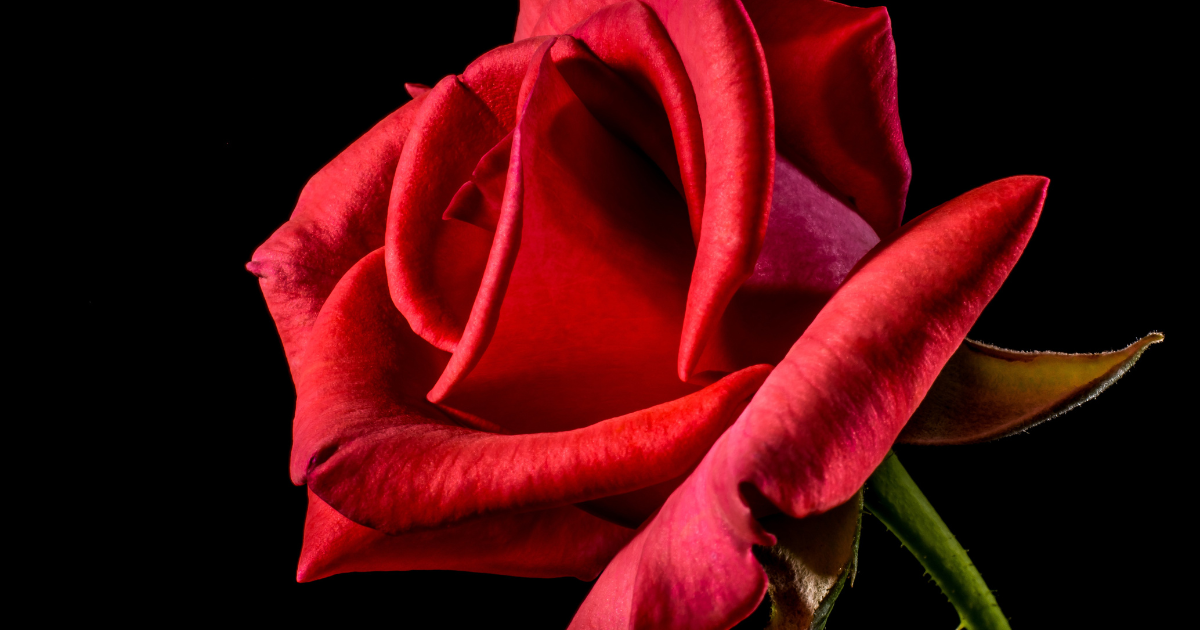



6 thoughts on “Rose Flower Spiritual Meanings, Symbolism, History & Mythology”